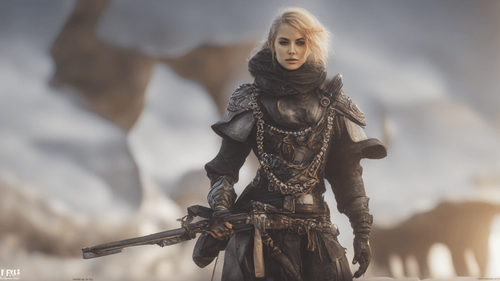
Introduction: Transforming Ideas into Visual Masterpieces
In today's rapidly evolving digital landscape, where visuals hold immense power, the convergence of artificial intelligence (AI) and creative expression has yielded groundbreaking innovations. One such innovation, the AI word to picture technology, is turning the realm of imagination into vivid reality. In this article, we delve deep into the fascinating world of AI-driven visual content creation, exploring its benefits, applications, and potential for revolutionizing creative industries.
AI Word to Picture: Defining the Future of Creativity
Imagine a tool that can effortlessly transform textual descriptions into stunning visuals, capturing the essence of words in a way that resonates with human imagination. This is precisely what AI word to picture technology offers—a revolutionary leap that bridges the gap between linguistic expression and visual representation. By leveraging advanced natural language processing and computer vision algorithms, AI is able to interpret written text and generate corresponding images, unleashing a new era of creative exploration.
The Inner Workings of AI Word to Picture Technology
At the core of AI word to picture technology lies a sophisticated interplay between linguistic analysis and visual synthesis. When a piece of text is input into the AI system, it undergoes a multi-layered process. First, the AI comprehends the semantic and contextual nuances of the text, identifying key themes, emotions, and concepts. Next, it harnesses its deep learning capabilities to select appropriate visual elements—such as colors, shapes, objects, and styles—that harmonize with the textual input. The final output is a meticulously crafted visual representation that encapsulates the essence of the words.
Unlocking Creative Potential: Applications Across Industries
The transformative potential of AI word to picture technology extends across a myriad of industries, each benefiting from its unique capabilities.
Marketing and Advertising: Elevating Campaign Visuals
In the fiercely competitive world of marketing and advertising, captivating visuals are paramount. AI word to picture technology empowers marketers to convey their brand messages more effectively. By converting product descriptions, taglines, and even consumer reviews into eye-catching visuals, marketers can create campaigns that leave a lasting impression.
Education and E-Learning: Making Learning Engaging
In the realm of education, AI word to picture technology has the power to revolutionize the way knowledge is imparted. Complex concepts can be simplified through visually rich explanations, enhancing student engagement and comprehension. Text-heavy materials can be transformed into interactive visual journeys, making learning a dynamic and immersive experience.
Content Creation: Redefining Artistic Expression
Artists and content creators are embracing AI word to picture technology as a source of inspiration. Writers can visualize scenes from their narratives, aiding in descriptive writing, while graphic designers can quickly translate textual briefs into stunning visual assets. This symbiotic relationship between human creativity and AI augmentation is redefining the boundaries of artistic expression.
Communication and Storytelling: Enhancing Narrative Impact
Storytelling is an age-old tradition that continues to captivate audiences. With AI word to picture technology, narratives come to life with vivid imagery, enhancing emotional resonance and reader engagement. Whether it's a blog post, a news article, or a fictional tale, the marriage of words and visuals creates a holistic storytelling experience.
The Future Landscape: Navigating Possibilities and Challenges
As AI word to picture technology continues to evolve, its potential knows no bounds. From personalized visual communication to AI-assisted creativity, the future promises a tapestry of innovations. However, challenges such as ethical considerations, data privacy, and the balance between human and AI contributions must be carefully navigated.
FAQs About AI Word to Picture Technology
How does AI word to picture technology work?
AI word to picture technology operates by analyzing written text and generating corresponding visual representations using advanced natural language processing and computer vision algorithms.
Can AI truly capture the essence of textual descriptions?
While AI can create impressive visuals based on textual input, there's an element of interpretation involved. It can capture key themes and emotions, but the depth of human creativity remains unparalleled.
Are there limitations to AI word to picture technology?
Yes, limitations exist. AI may struggle with highly abstract concepts or nuanced emotions that require human understanding. Additionally, the visual output may not always align with the creator's exact vision.
How can businesses leverage AI word to picture technology?
Businesses can use AI word to picture technology for marketing campaigns, educational materials, content creation, and enhancing storytelling. It's a versatile tool that adds visual impact to various contexts.
What ethical considerations surround AI-generated visuals?
As AI-generated visuals become more prevalent, ethical concerns related to copyright, authenticity, and misrepresentation may arise. Ensuring transparency and proper attribution is crucial.
Will AI word to picture technology replace human creativity?
AI is a powerful tool that enhances human creativity, but it's unlikely to replace it entirely. The collaboration between AI and human creators results in a unique blend of innovation and artistic expression.
Conclusion: A Harmonious Fusion of Imagination and Technology
In the dynamic landscape of AI-driven innovation, AI word to picture technology stands as a testament to human ingenuity and technological prowess. By seamlessly translating words into visuals, this technology transcends conventional boundaries, opening new avenues for creative exploration and communication. As we move forward, the interplay between AI and human creativity promises a future where imagination knows no limits—an era where every word has the potential to paint a thousand pictures.